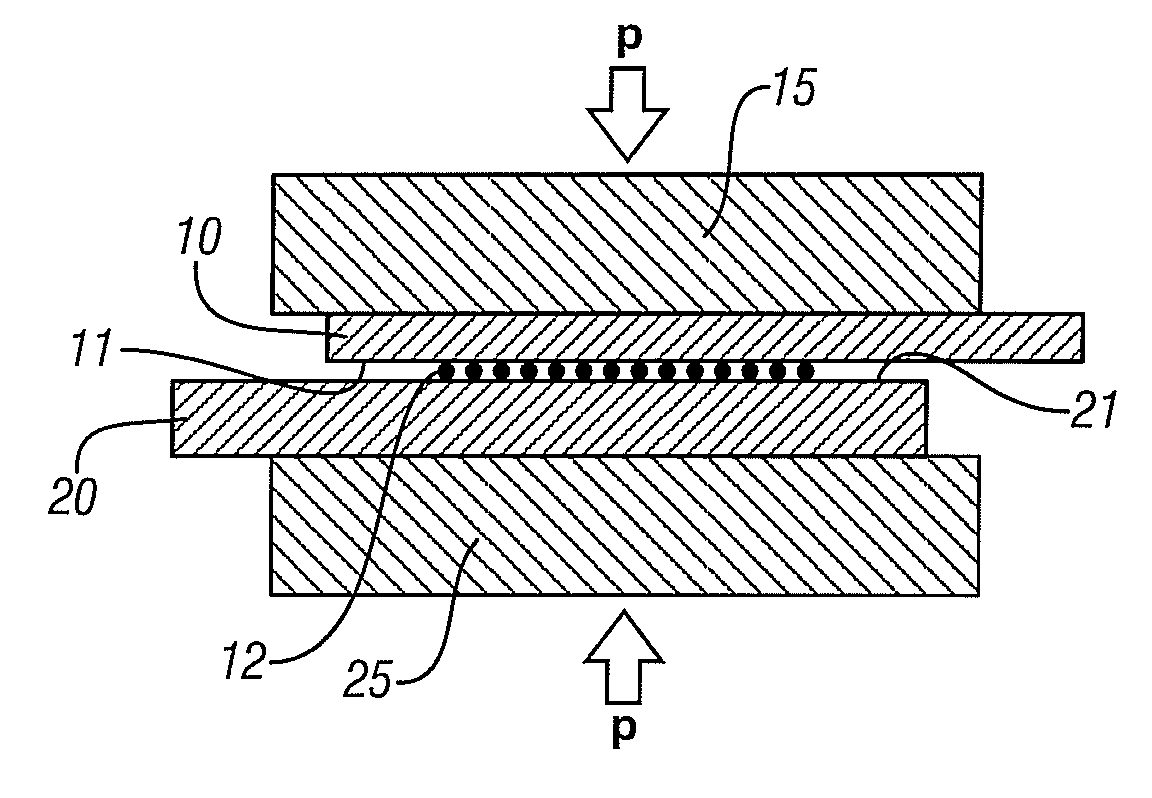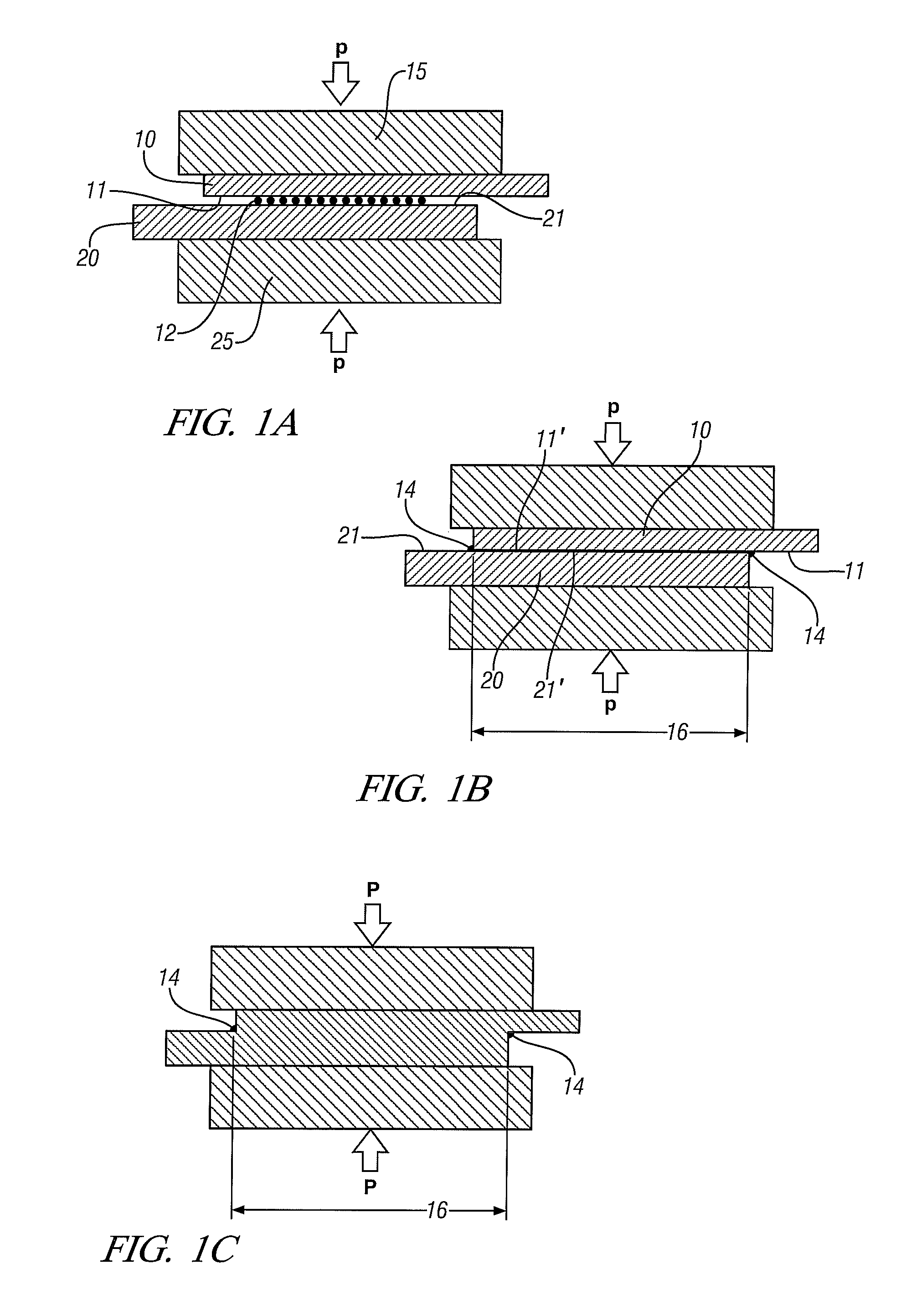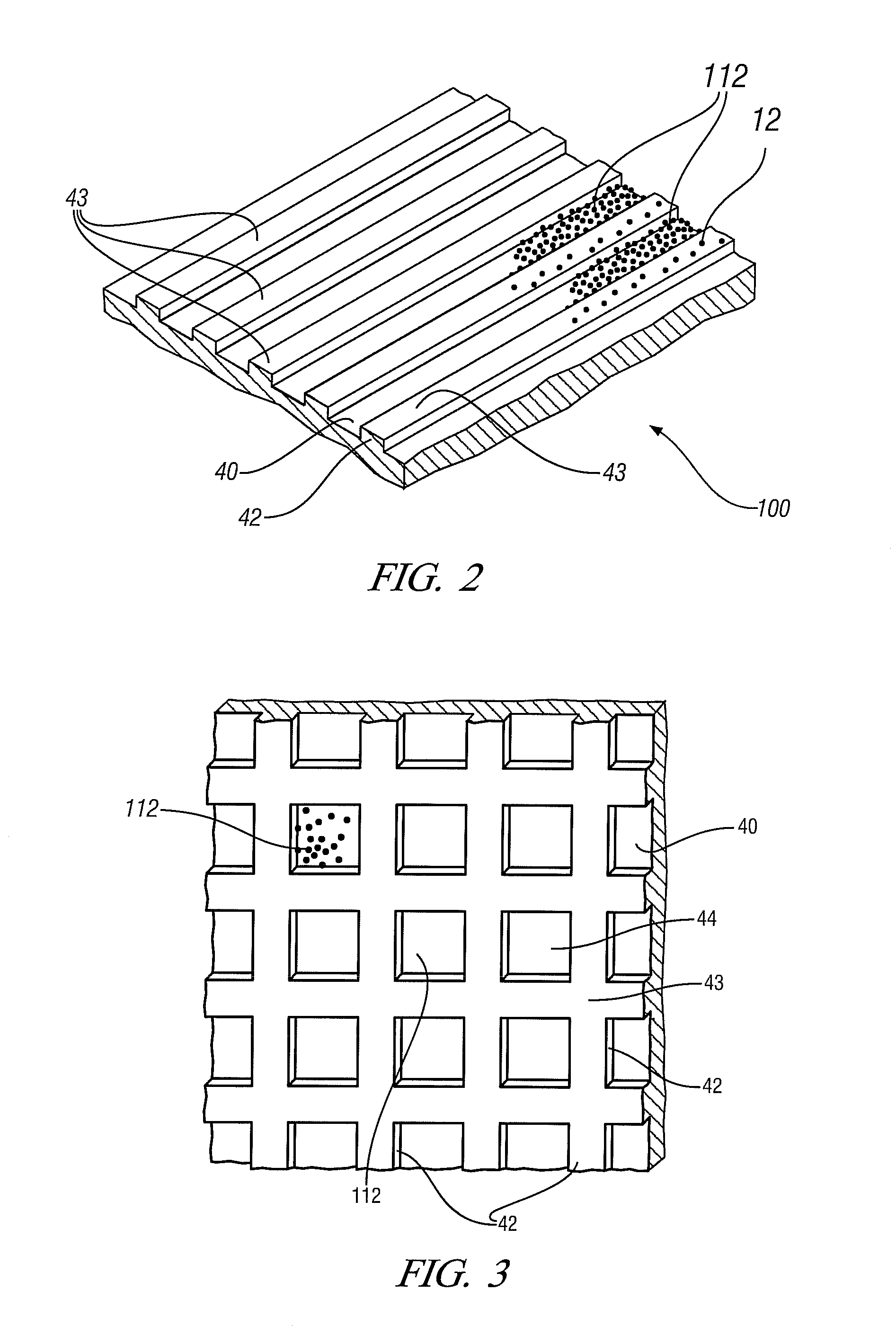Welding light metal workpieces by reaction metallurgy
a reaction metal and workpiece technology, applied in the direction of non-electric welding apparatus, welding apparatus, manufacturing tools, etc., can solve the problems of complex joining of light metals such as aluminum alloys or magnesium alloys, short electrode life, and difficulty in spot welding of both alloy types, so as to minimize the distortion of the weld region, and minimize the effect of unwanted deformation
- Summary
- Abstract
- Description
- Claims
- Application Information
AI Technical Summary
Benefits of technology
Problems solved by technology
Method used
Image
Examples
Embodiment Construction
[0026]In many embodiments of this invention the process may be used to form solid-state welded interfaces between aluminum alloy workpieces or between magnesium alloy workpieces. Examples of aluminum-base alloys are AA5083 (solidus temperature of 574° C.), AA5454 (solidus 602° C.), and AA6061 (solidus 582° C.). Examples of magnesium-base alloys are AZ31 (solidus temperature of 605° C.), AM60 (solidus temperature of 540° C.), and ZK60 (solidus temperature of 520° C.). In other embodiments of the invention an aluminum-coated steel workpiece or a zinc-coated steel workpiece may be welded to an aluminum alloy or magnesium alloy workpiece.
[0027]The process may often be used in welding sheets or other workpieces with relatively thin walls at the joint position. FIGS. 1A-1C are used to illustrate such embodiments.
[0028]In FIG. 1A, two metal workpieces 10 and 20, here shown in an overlapping configuration, are located between two support blocks 15 and 25 respectively with a layer of particu...
PUM
| Property | Measurement | Unit |
|---|---|---|
| thickness | aaaaa | aaaaa |
| melting point | aaaaa | aaaaa |
| temperature | aaaaa | aaaaa |
Abstract
Description
Claims
Application Information
 Login to View More
Login to View More - R&D
- Intellectual Property
- Life Sciences
- Materials
- Tech Scout
- Unparalleled Data Quality
- Higher Quality Content
- 60% Fewer Hallucinations
Browse by: Latest US Patents, China's latest patents, Technical Efficacy Thesaurus, Application Domain, Technology Topic, Popular Technical Reports.
© 2025 PatSnap. All rights reserved.Legal|Privacy policy|Modern Slavery Act Transparency Statement|Sitemap|About US| Contact US: help@patsnap.com



